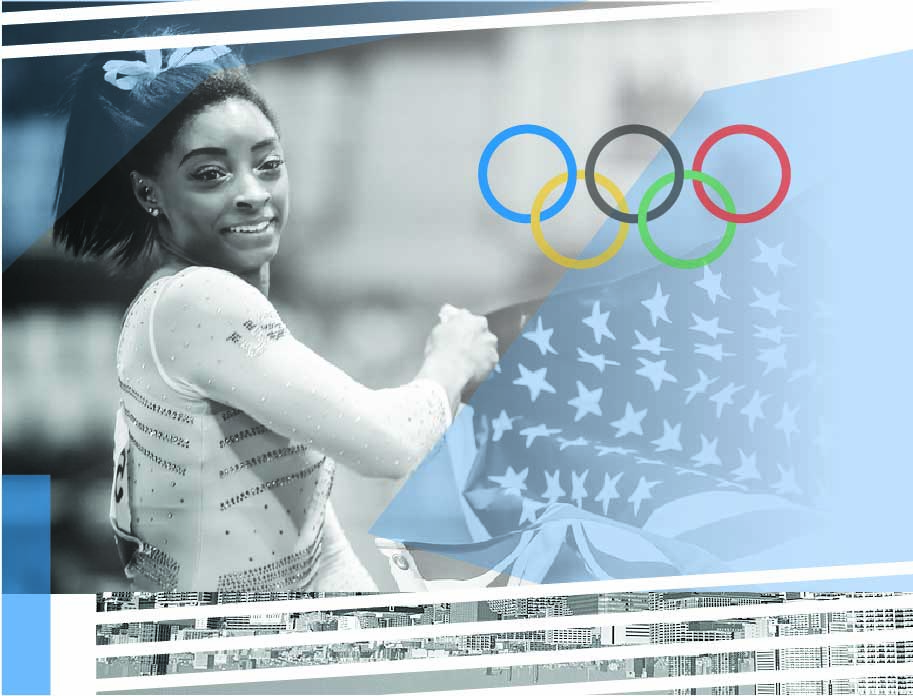
Dr. Courtney M. Cox
Assistant Professor in the Department of Indigenous, Race, and Ethnic Studies at the University of Oregon. She is also co-director of The Sound of Victory, a multi-platform project located at the intersection of music and sport. Her work focuses on labor, identity, and technology through sport.

Section 1: Tokyo & Mega-Events
- Public relations as the key in the 2020 Tokyo Olympic and Paralympic Games
- Tokyo 2020, East Asian geopolitics and Olympic diplomacy
- Anti-sex beds? Fake news! : why this video went massively viral?
- Power sharing: Olympic sponsorship and the athlete’s personal brand
- The Tokyo 2020 Organizing Committee’s veil of effective public relations to help save itself and the start of the Games
- Host city and mega-events: Olympic legacy in Japan
- The rise of critical consciousness in Japan: An intangible and unintended legacy of the Tokyo 2020 Olympic Games
- The soft power of the Olympics in the age of Covid 19
- Tokyo 2020 Olympic Games, nationalism, identity and soft power
- The typhoon games
- Environmental leadership showcased in the Olympic Games
- Simone Biles and prioritizing athlete well-being
- How the female athletes of the Tokyo Olympics are reframing the way we think about motherhood
- Deliver a medal or apologize: A daunting task imposed on Japanese Olympians
- What happened to Rule 40 at Tokyo 2020?
- Cultural programming at Tokyo 2020: the impossible Olympic festival city?
- A green Olympic legacy for future generations?
- Lessons from Tokyo: the impact of the Paralympics in Japan
- Let’s play! Inspiring an inclusive mindset with a hands-on Paralympic experience for children and teenagers in Japan.
- The Olympic & Paralympic sponsorship without category exclusivity: Background of sponsorship exclusivity in Olympic and Paralympic Games (OPG)
- The Olympic Games and ambush marketing via social media
- Pride and burden of striving for perfection at the Olympics
As of this writing, more than four million people worldwide have died from the COVID-19 virus and over 200 million more have been infected during this pandemic. In documenting the toll of this crisis, the Spanish influenza pandemic (1918-1920) is frequently cited in comparison to the current moment, given the Spanish flu claimed the lives of an estimated 50 million people as the world also reeled from the effects of World War I. The two pandemics share another parallel – the insistence on staging the Olympic Games amid international devastation. Tokyo governor Yuriko Koike invoked the 1920 Antwerp Games as an event that “brought hope” to the masses and aligned the Tokyo Games with a similar mission, even as Japan announced a state of emergency and over 80% of Japanese citizens wanted the Games postponed or cancelled.
The 1920 Games in Antwerp are but one example of how global flows of sport and sickness interact. We need only look at the H1N1 flu’s impact during the 2010 Winter Olympics in Vancouver, the Zika virus in 2016 at the Olympics in Rio, or most recently, the norovirus at Pyeongchang’s 2018 Games. Given this context, the Tokyo Games emerge as the new normal; that is, the expectation that a global event of this magnitude might lay bare the vulnerabilities that so easily permeate borders and bodies.
What these Games actually reveal is the state of constant contagion transmitted via Olympism (the ideals and values offered through the history of the Olympics and its charter) where every two years, summer and winter, this mega-event reveals the debris of a crumbling global civil society, covered in the residue of what sport communication scholar Lawrence Wenner calls “sport dirt” – where the cultural logics and values of sport “rub off” onto broader corporate, communal, and cultural formations. Before the Games started, I recall seeing consistent tweets from folks who could not comprehend why the Olympics would occur during a global pandemic that showed no end in sight. However, once athletes entered the field of play, the disdain for the International Olympic Committee (IOC) evaporated for many and the medal count emerged as the only numerical marker that mattered.
Tucked behind the podiums, medals, and world-class facilities are the 430 people – primarily Japanese officials and contractors – who contracted the virus and the greater Tokyo community rendered vulnerable at the hands of the IOC and Japanese government. Nestled between the heartwarming moments of triumph and the human interest stories that allow us into the lives of the world’s best athletes are the nearly 300 Olympians who tested positive for the virus leading up to and during the Games. On August 5, 2021, in the midst of the Olympics, Tokyo reached 5,042 new COVID-19 cases – a pandemic-high – a number that the IOC denies is linked to the Olympics.
In an op-ed published by The New York Times, professor of political science and former Olympian Jules Boykoff writes, “The IOC oversees the most pervasive yet least accountable sport infrastructure of the world. The group appears to have fallen under the spell of its own congenital impunity. Pressing ahead with the Olympics risks drinking poison to quench our thirst for sport.” In many ways, the Olympics and the interconnected governing bodies are not unlike other sporting institutions that resumed play before full assurance that sport could operate safely. However, the global reach of the Games set new hegemonic norms that trickle down to other leagues and federations, seemingly for years to come. Our thirst for athletic spectacle, along with the billions of dollars spent for the Tokyo Games, transcends the dire conditions of a global pandemic.
In an article for Deadspin, Spike Friedman writes, “What’s often missed in mainstream critiques of the Olympics is how the various forms of rot they bring to individual cities can grow and mutate in the years and decades that follow” (emphasis mine).
Rot. Poison. Contagion.
As cases in Japan continue to surge in the aftermath of the Olympics – and in preparation for the upcoming Paralympic Games – the metaphor of mutation is an apt one. Whether considering the public health consequences of the Games or the myriad of political, economic, and environmental costs of hosting this particular sporting mega-event every two years (detailed throughout this report), the murmuring of anti-Olympic resistance grows louder and louder. The virality of epic sporting moments is rivaled only by the looming fear of pandemic in perpetuity.

